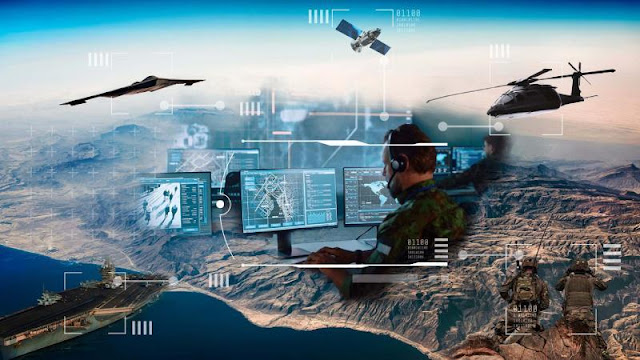In the modern era of warfare, the concept of the "connected battlespace" has emerged as a transformative approach to military operations. This paradigm shift leverages advanced technologies and interconnected systems to enhance situational awareness, streamline decision-making, and optimize combat effectiveness. By integrating various assets and capabilities, the connected battlespace promises to revolutionize the way military forces operate. In this blog post, we will explore the key elements of the connected battlespace and delve into its potential implications for future conflicts.
1. The Power of Connectivity:
The connected battlespace relies on interconnected networks, sensors, and platforms to create a seamless flow of information across all levels of command. Through real-time data sharing, military personnel gain an unprecedented level of situational awareness, enabling them to make well-informed decisions in a dynamic and rapidly evolving operational environment. This connectivity also facilitates efficient coordination among different branches of the armed forces, promoting joint operations and interoperability.
2. Sensor Fusion and Intelligence Integration:
One of the cornerstones of the connected battlespace is sensor fusion, where data from multiple sources such as satellites, drones, ground-based sensors, and reconnaissance aircraft are integrated to provide a comprehensive picture of the battlefield. This fusion of information is combined with advanced analytics and artificial intelligence algorithms to generate actionable intelligence for commanders. By having a holistic understanding of the battlespace, military leaders can optimize their strategies and allocate resources effectively.
3. Networked Command and Control:
In a connected battlespace, command and control systems are interconnected, enabling rapid and secure communication between decision-makers and frontline units. This seamless flow of information allows for faster decision-making and the ability to adapt to changing circumstances promptly. Commanders can remotely monitor and direct operations, allocate resources, and even employ autonomous systems to augment their forces. This enhanced command and control structure enhances operational efficiency and reduces response times, leading to a decisive advantage on the battlefield.
4. Enhanced Force Multipliers:
The connected battlespace unlocks the full potential of various force multipliers, such as unmanned systems, cyber capabilities, and precision-guided weaponry. Unmanned aerial and ground vehicles can be seamlessly integrated into the network, extending the reach of military forces and reducing risks to human personnel. Cyber capabilities enable proactive defense and offensive operations in the digital domain, disrupting enemy communications and infrastructure. Precision-guided weapons, guided by real-time intelligence, increase accuracy and minimize collateral damage.
Conclusion
The concept of the connected battlespace represents a paradigm shift in military operations, harnessing the power of connectivity, sensor fusion, and networked command and control to enhance combat effectiveness. By embracing this approach, armed forces can achieve greater situational awareness, faster decision-making, and improved coordination among different assets. However, the implementation of a fully functional connected battlespace requires robust cybersecurity measures to protect sensitive information from adversaries. As we move into the future, the connected battlespace will undoubtedly play a pivotal role in shaping the nature of warfare, empowering military forces to achieve superior operational outcomes.
Source
